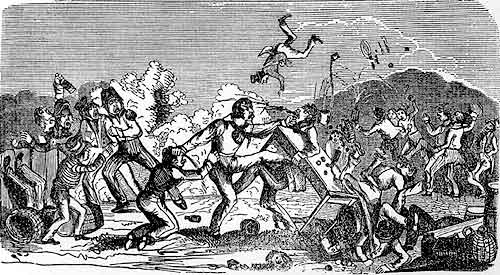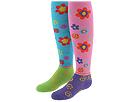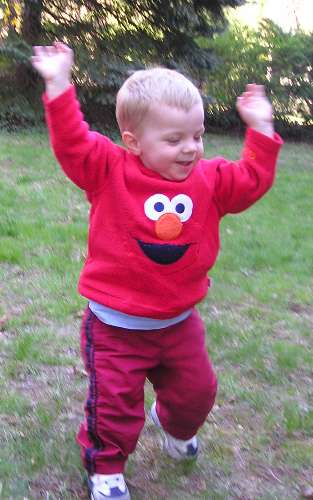There is a convention of dividing
gongfu into internal and external, and following that logic
qigong is also sometimes divided this way. When we refer to qi, we often mean the animation of the interior world, the felt world. This is meant to be distinct from the seen world, how our bodies look, our form, the external shell. The traditional way to learn something is to begin with the external, and gradually become more internal. As the internal develops there is a movement outward toward refining the external, and then back toward the internal again; a circular process. The real distinction is that ‘internal arts’ put more emphasis on the internal, and do it sooner, almost from the beginning.
Taijiquan is the most well know internal art, but baguazhang and xingyiquan along with hundreds of qigong exercises (many of them abstracted from one of those three arts) have been steadily gaining in popularity. The following is meant to be helpful in understanding the term, 'internal.'
If you move your tongue around in your mouth and then do the same thing looking in the mirror it will appear that your tongue is moving differently than it feels. The tongue tends to exaggerate the size of objects it touches. This becomes really obvious when you have a cut on your tongue. Similarly, the back of the palms and the front of the wrists perceive heat and moisture quite differently. (You can try it right now.)
The internal organs move around like the tongue and each has it's own very specialized sensory and motor nerves, as well as its own intelligence. The feeling of lifting up your right kidney feels very different than the feeling of lifting up your right shoulder, but both can be felt. Rotating your liver feels very different than rotating your head, but both move independently. Our internal organs move around semi-consciously most of the time,

completing specialized functions automatically.
This 'internal' movement necessarily supports all our other movements. This is experience is the basis for Structure school of Chinese medicine. The premise of which is that chronic illness, injury, "deficiency" or "excess" will have a physical impact on the underlying structure of our bodies. It will eventually reshape even our bones.
All our 'external' movements like waving our hands or wiggling our toes are interdependent with internal movements for support. This is part of the function of our organs, our vessels, glands etc…, form is inseparable from more obvious function( their form shape and movement have a function in addition there systemic functions). When that support is partial, inhibited or too abrupt we say qi flow is inhibited or restricted. Over time these qi restrictions may become imbalances, stiffness, collapsing, or pain, in both 'internal' and 'external' movement.
Qi gong teachers have many devices for developing students' sense of the internal. Remember that the concept that qi itself is not restricted to or limited by ideas of internal or external personal space, it's bigger than that. Working with the concept of qi means not restricting our view to just organs, or even the limits of the physical body, it would suggest an expansive view, and a softened focus. [Where you practice matters!]
Thus it follows that this seemingly infinite movement inwards also continues as our gestures, movements, and our senses move out into space. Tying the internal to our conduct and to the shape of the environment we live in.
Imagination is a necessary component of feeling. Most people feel their liver moving, they just haven’t named it and thus, in not naming it, they have not differentiated it. (is it still part of undifferentiated chaos?) Feeling is a type of distinction which requires some imagination and some practice.
Therefore I’m dubious of distinctions between mental and physical.

 need? Isn’t there some point at which more power training is just silly. Isn’t that the point of a lot of Kungfu movies? If my punches can break bones, and knock a man 50 pounds heavier than me to the ground, do I need more?
need? Isn’t there some point at which more power training is just silly. Isn’t that the point of a lot of Kungfu movies? If my punches can break bones, and knock a man 50 pounds heavier than me to the ground, do I need more?

 increasing your heart rate enough to break a sweat. Over time you will be able to move faster and more vigorously without increasing your heart rate.
increasing your heart rate enough to break a sweat. Over time you will be able to move faster and more vigorously without increasing your heart rate. The issue of whether or not a particular martial art is effective or not comes up all the time. What is realistic?
The issue of whether or not a particular martial art is effective or not comes up all the time. What is realistic? barehanded fighting that still influences how we think about fights today.
barehanded fighting that still influences how we think about fights today. It was a throwing game. If any part of your body besides your feet touched the ground you lost the bout.
It was a throwing game. If any part of your body besides your feet touched the ground you lost the bout. all). Practicing very slowly at first, have your partner use their arms to make contact with your arms on the outside of your ring. Keeping contact your partner then slowly moves their hands toward your neck. A small increase in the size of your ring will arrest their progress (once they are stopped they should not keep trying but instead break contact and start again). This un-trains the defensive response often called against the wall, meaning using your back muscles to pull your arms apart (a reflex we use to protect our head and neck when falling backwards).
all). Practicing very slowly at first, have your partner use their arms to make contact with your arms on the outside of your ring. Keeping contact your partner then slowly moves their hands toward your neck. A small increase in the size of your ring will arrest their progress (once they are stopped they should not keep trying but instead break contact and start again). This un-trains the defensive response often called against the wall, meaning using your back muscles to pull your arms apart (a reflex we use to protect our head and neck when falling backwards). In the religious Daoist tradition stories are considered qi transmissions. To study personally with a great bagua or qigong teacher is of immeasurable value but we can receive qi transmissions in many different ways.
In the religious Daoist tradition stories are considered qi transmissions. To study personally with a great bagua or qigong teacher is of immeasurable value but we can receive qi transmissions in many different ways.

 What is it like watching most older people move? Is it a source of pity or sympathy, or perhaps a foreboding omen of what we can some day expect ourselves? If we were to study older peoples' movements with respectful inquisitiveness what might we learn?
What is it like watching most older people move? Is it a source of pity or sympathy, or perhaps a foreboding omen of what we can some day expect ourselves? If we were to study older peoples' movements with respectful inquisitiveness what might we learn? Some guy named Jerome Weng in Singapore responded to my Youtube video
Some guy named Jerome Weng in Singapore responded to my Youtube video  know eight palm changes which correspond to the eight trigrams, you can practice each hexagram too. Think of each hexagram as a transition between two trigrams and practice that transition. (So for example, hexagram 63 is li [fire] transitioning into kan [water].) On divination days, improvise!
know eight palm changes which correspond to the eight trigrams, you can practice each hexagram too. Think of each hexagram as a transition between two trigrams and practice that transition. (So for example, hexagram 63 is li [fire] transitioning into kan [water].) On divination days, improvise! completing specialized functions automatically.
completing specialized functions automatically.